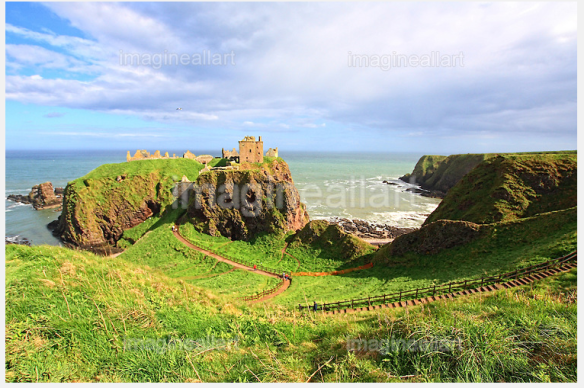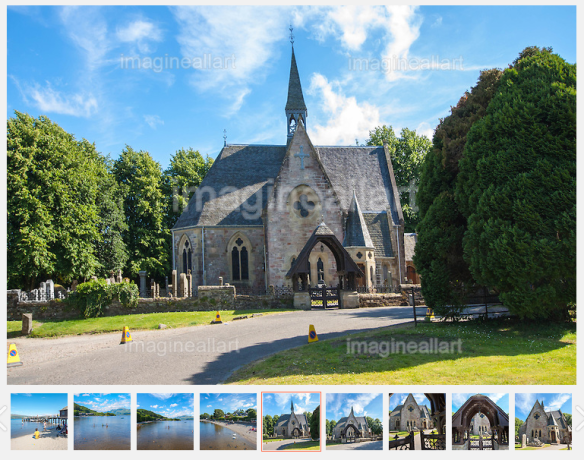Loch Katrine is a freshwater loch in the district of Stirling, Scotland. It is a popular destination for tourists and day visitors from Glasgow and other nearby towns. The loch derives its name from the term cateran from the Gaelic ceathairne, a collective word meaning cattle thief or possibly peasantry. Historically this referred to a band of fighting men of a clan; hence the term applied to marauders or cattle-lifters, the most notorious of whom was Rob Roy MacGregor who was born at Glengyle House at the northern end of the Loch.
It is the fictional setting of Sir Walter Scott’s poem The Lady of the Lake and of the subsequent opera by Giachino Rossini La donna del lago. Loch Katrine is owned by Scottish Water and is the primary water reservoir for much of the city of Glasgow and its surrounding areas.
The main access points for Loch Katrine are either via TrossachsPier at the loch’s eastern end or Stronachlachar (Gaelic Sròn a’ Chlachair “the headland of the stonemason”) towards the western end of the loch. Trossachs Pier essentially consists of a parking space, pier, gift shop and cafe (Katrine Cafe) which are open from the first to the last sailing of the cruise boats, (normally 6pm).
On the northern shore are the Brenchoile hunting lodge and the farms Letter (Gaelic: Leitir), Edra (Gaelic: Eatarra “between them”), Strone (Gaelic: An t-Sròn “the nose”), Coilachra, Portnellan (Gaelic: Port an Eilein “port of the island”) and Glengyle (Gaelic: Gleann Goill “glen of a lowlander”), on the southern are The Dhu (Gaelic: An Dubh “the black”) at the western end of the loch, Stronachlachar, the Royal Cottage, Culligart and Glasahoile (Gaelic: Glas-choille “greywood”). The roads and paths do not circle the loch completely, as the southern road stops at Glasahoile.
There are several small islands in Loch Katrine such as Ellen’s Isle (Gaelic: An t-Eilean Molach “the shingly isle”), the Black Isle and Factor’s Island (Gaelic: Eilean a’ Bhàillidh).




